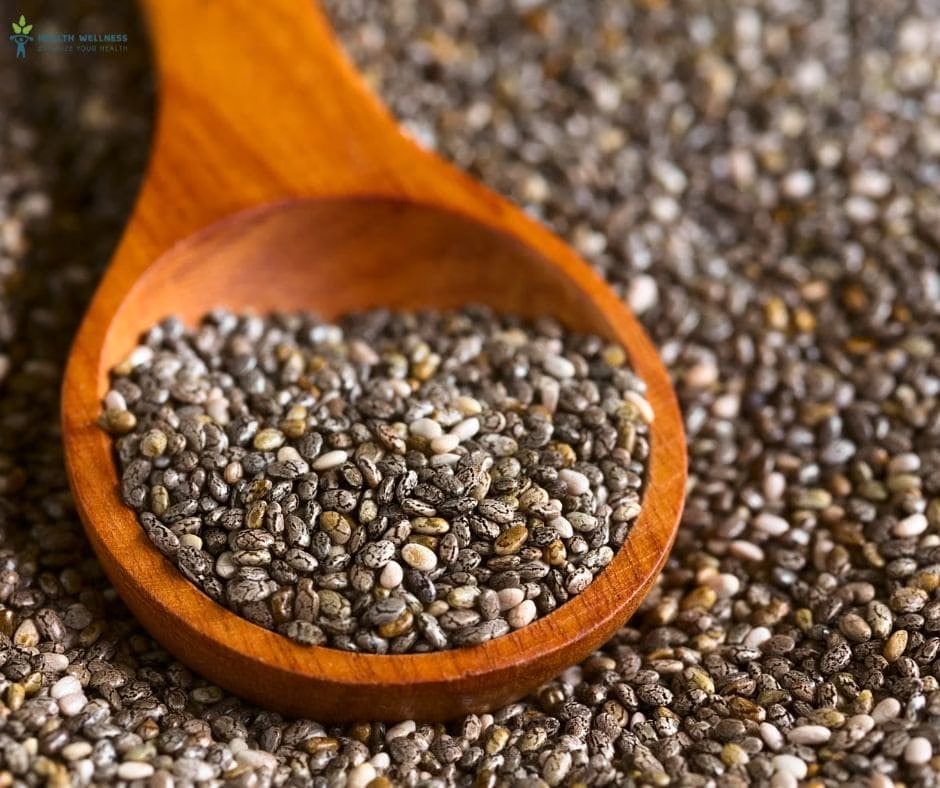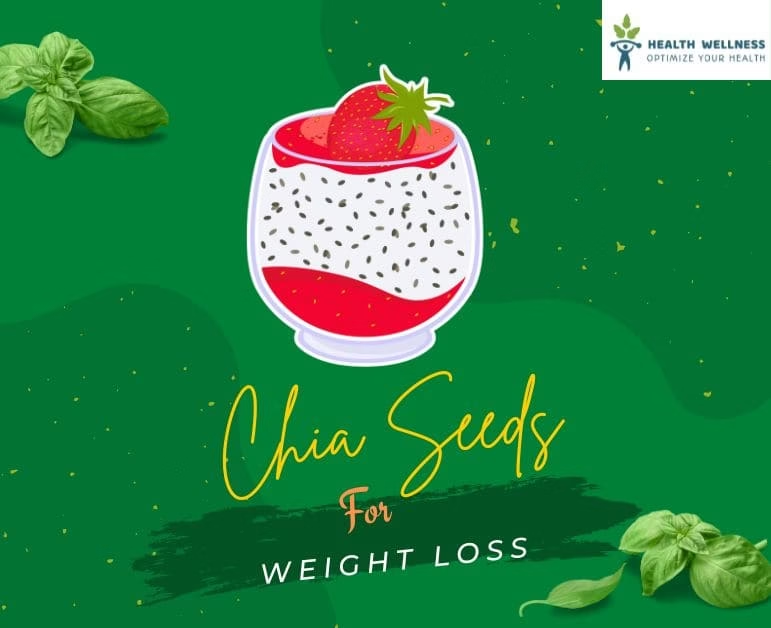People have used chia seeds for weight loss for over 5,000 years, starting with the Aztecs and Mayans. Science now shows why these tiny seeds are so powerful. A single ounce contains 138 calories, packs 4.7 grams of protein, and delivers an impressive 9.8 grams of fiber – making them 35% fiber by weight.
Many people call chia seeds a modern superfood, but research on their weight loss benefits shows mixed results. A major 6-month study of 77 people with obesity found that eating chia seeds daily helped them lose more weight than those taking a placebo. But another study with 90 participants showed no real change in body mass after consuming 25 grams each day.
The science behind chia seeds’ weight loss potential deserves a closer look. We’ll get into their nutritional makeup and give you practical tips to add them to your diet. This piece will help you understand what these ancient seeds can really do to support your weight loss goals.
The Science Behind Chia Seeds and Weight Loss
The small, humble chia seed delivers remarkable scientific benefits for weight management. The way these seeds work in your body explains why nutrition experts recommend them to support weight loss.
How chia seeds affect satiety hormones

Your body regulates hunger control, though it starts in the mind. Studies show chia seeds affect how full you feel after eating by a lot. A controlled study revealed that eating 7g or 14g of chia seeds mixed with yogurt as a mid-morning snack made participants feel fuller and less hungry.
This feeling of fullness isn’t just in your head—it changes how much you eat. People who ate chia-enriched yogurt for breakfast felt fuller and ate less food shortly after.
The effects of chia seeds remain consistent across different studies. Scientists believe this happens because chia seeds target multiple satiety pathways at once, which creates a complete system for managing appetite.
The role of fiber in appetite control
Chia seeds contain 30-34% dietary fiber by weight, more than dried fruits, cereals, and nuts. Their fiber makeup is unique: 85-93% insoluble fiber and 7-15% soluble fiber.
Chia seeds change remarkably in your stomach. The soluble fiber soaks up water and creates a gel that:
- Expands to make you feel full
- Makes digestion and glucose release slower
- Adds bulk to stool and improves digestive health
- Keeps you feeling full longer between meals
This gel formation explains why eating just one ounce (28g) of chia seeds—with nearly 10g of dietary fiber—affects your appetite substantially. The fiber fills your digestive system and signals fullness to your brain.
The high fiber content also slows down stomach emptying. Your body releases glucose more gradually into your bloodstream, which prevents sudden blood sugar changes that make you hungry. Research confirms that people who ate chia-fortified bread had better blood sugar control than those who ate regular bread.
Omega-3 fatty acids and metabolism

Chia seeds excel in essential fatty acids. About 60% of their fats are alpha-linolenic acid (ALA), making them nature’s best plant-based source of omega-3s—better than flaxseed.
These omega-3s help manage weight in several ways:
Omega-3s reduce inflammation throughout your body. Inflammation can interfere with normal metabolism, so fixing this helps regulate weight better. Diabetic patients who took 15g of chia seeds per 1000 calories for 12 weeks showed a 40% drop in high-sensitivity C-reactive protein, which indicates inflammation.
The fatty acids in chia seeds improve lipid metabolism. One study showed that daily chia seed consumption reduced waist size without changing total body weight, suggesting it might improve body composition. Research also shows these fatty acids can increase heart-healthy HDL cholesterol.
Chia seeds might also influence how your body produces energy. Research links chia’s benefits to AMPK modulation—a vital cellular energy sensor that controls glucose uptake and fat burning. This improves how your body handles glucose and insulin while affecting fat creation, which might explain chia’s metabolic advantages.
Nutritional Profile of Chia Seeds for Weight Management
Chia seeds may be tiny, but they pack a powerful nutritional punch that makes them valuable to anyone looking to manage their weight. A closer look at these seeds shows why they’ve become such a popular choice for people who want to lose weight naturally.
Calorie content vs. nutritional density
These seeds provide great nutritional value at just 138 calories per ounce (about 2 tablespoons). Each serving gives you 8.7 grams of fat, 11.9 grams of carbohydrates, and 9.8 grams of fiber.
Chia seeds stand out because fiber makes up over 80% of their carb content. The fiber breakdown shows 85-93% insoluble and 7-15% soluble fiber. You get substantial nutrients without loading up on calories when you eat chia seeds.
The fat content in chia seeds deserves a closer look. Each ounce contains 8.7 grams of fat, with only 0.9 grams being saturated. Most fats in chia seeds are polyunsaturated (6.7 grams), including 5 grams of omega-3 fatty acids. These omega-3s help fight inflammation and support your body’s metabolism during weight loss.
A single serving of dried chia seeds (about 2.5 tablespoons) contains 140 calories, 12 grams of carbohydrates, 10 grams of fiber, and 9 grams of fat—8 grams of which are heart-healthy fats. This rich nutrient profile makes chia seeds perfect for anyone wanting nutritious calories while managing their weight.
Protein content and muscle preservation
Muscle mass preservation becomes vital when you’re losing weight. Chia seeds contain 4.7 grams of protein per ounce, making them a great plant-based protein option.
These seeds contain all nine essential amino acids, which qualifies them as a complete protein—something rare in plant foods. This complete amino acid profile helps your body maintain muscle while cutting calories.
Getting enough protein helps preserve muscle during weight loss. While the Recommended Daily Allowance sits at 0.36 grams per pound of body weight, people actively losing weight often need more. Spreading protein intake throughout the day helps meet daily goals, with 20-25 grams per meal or snack as a general target.
Two tablespoons of chia seeds add about 4 grams of protein to your daily intake. Though this amount might seem small, chia’s protein helps keep blood sugar steady and provides consistent energy—both key factors in successful weight management.
Essential minerals that support weight loss

Chia seeds are rich in minerals that boost metabolic health and support weight management. One ounce provides:
- Manganese: 23% of the Daily Value, essential for metabolism and development
- Phosphorus: 20% DV, supporting bone health and tissue maintenance
- Copper: 29% DV, important for heart health
- Selenium: 29% DV, a critical antioxidant
- Iron: 22% DV, involved in oxygen transport throughout the body
- Magnesium: 23% DV, often lacking in Western diets
- Calcium: 13% DV, essential for bones, muscles, and nerves
These minerals work together to help manage weight. Magnesium helps control blood sugar and energy production, while selenium supports thyroid function—your body’s metabolism regulator.
Copper helps produce energy in cells, and manganese activates enzymes that help with metabolism and fat digestion. Phosphorus plays a key role in how your body stores and uses energy.
Chia seeds’ minerals also help maintain proper hydration and electrolyte balance—often overlooked aspects of effective weight management and exercise performance.
While chia seeds don’t contain many vitamins, their rich mineral content combines with fiber, protein, and healthy fats to create a nutrient-dense food that supports many aspects of weight management at once.
Research Studies on Chia Seeds and Weight Loss
Scientific research paints a complex picture of how chia seeds affect weight loss. Clinical studies have produced promising but sometimes conflicting results. Let’s take a closer look at what the evidence tells us.
What clinical trials reveal
Research teams have studied how chia seeds directly affect weight management. A University of Toronto study showed people who ate two heaping tablespoons of chia daily lost over five times more weight than those who ate oat bran. A six-month study of 77 people with obesity or overweight found better results with chia seeds. People who took chia seeds daily with a calorie-restricted diet lost more weight than those who took a placebo.
Research from the University of Tennessee revealed some interesting findings. Dieters who got plenty of calcium from foods lost 70% more weight and 81% more belly fat than others eating the same calories but less calcium. People who added more plant-based omega-3 fatty acids – which chia seeds have plenty of – lost 200% more weight than those who didn’t.
A 12-week study with overweight and obese people showed that chia consumption led to weight reduction of 1.1±0.4 kg. Obese participants saw better results, losing 1.6±0.4 kg. These differences became less noticeable when compared to placebo groups.
Studies consistently show reductions in waist size. A meta-analysis found that adding chia seeds to diet reduced waist circumference by 2.82 cm. This finding matters because belly fat links strongly to metabolic disorders.
Limitations of current research
The current research has some clear limitations. Most studies use small groups of 29-90 participants. This makes it harder to draw broad conclusions.
Study lengths vary too much. They range from 10 days to 24 weeks, which makes comparing results difficult. Nobody knows yet if longer studies would show better results.
Daily chia seed amounts differ greatly between studies – from 4g up to 50g. This makes it hard to figure out the best amount for weight loss.
Studies also use different dietary approaches. Some combine chia seeds with calorie-restricted diets, while others let participants eat normally. These differences likely explain why results often conflict.
Real-world results vs. laboratory findings
The difference between lab studies and real-life application is vital. Studies that combine chia seeds with fewer calories show better weight loss than those testing chia seeds by themselves.
A complete review found four studies showing good weight loss when people ate chia seeds with a low-calorie diet. Two studies showed minimal weight loss when people added chia seeds to their normal diet, and one study found no weight loss at all.
Chia seeds work best as part of a complete weight management plan rather than alone. This lines up with meta-analysis findings that chia seeds alone don’t affect most lipid profiles or blood sugar markers much.
The seeds do lower inflammatory markers like C-reactive protein (CRP) by 1.18 mg/L[141]. Since inflammation links to obesity and metabolic disorders, this anti-inflammatory effect might help with long-term weight management in everyday life.
The most reliable benefit seems to be a smaller waist size, which happened even when people didn’t lose much weight. This suggests chia seeds might help redistribute fat, whatever the scale says – a real benefit that goes beyond just losing pounds.
How to Use Chia Seeds Effectively for Weight Loss
Knowledge becomes action when you know the right way to add chia seeds to your daily meals to lose weight. Let’s tuck into the practical steps that will help you use these powerful seeds.

Optimal preparation methods
You should never eat chia seeds dry. These seeds can absorb up to 12 times their weight in liquid and form a gel-like consistency that improves their benefits. The simple preparation requires mixing one tablespoon of chia seeds with 3 tablespoons of water. After soaking, you can add these versatile seeds to:
- Smoothies or juices
- Oatmeal or overnight oats
- Yogurt or puddings
- Salads or dressings
- Baked goods like muffins or bread
Chia pudding makes an excellent breakfast choice. Mix chia seeds with milk (or plant-based alternative), leave them in the refrigerator overnight, and top with fruits for a filling morning meal.
Best time to consume chia seeds
The timing of your chia seed consumption can affect its effectiveness. Eating them early in the morning on an empty stomach works best for weight loss. This kickstarts your metabolism and keeps you full throughout the day.
Chia seeds give you sustained energy and hydration before workouts. Taking them in the evening helps digestion and stops late-night snacking. They also regulate blood sugar levels overnight when you take them before bed.
Recommended daily amounts for weight loss
Weight management requires limiting consumption to 1-2 tablespoons (15-30 grams) daily. Beginners should start with just one tablespoon. A single ounce (28g) has about 140 calories, so portion control matters.
You can increase your intake gradually with plenty of water to avoid digestive issues. Two tablespoons give you about 11 grams of fiber—almost half your daily needs.
How long to soak chia seeds for maximum benefits
Soaking time plays a crucial role in nutrient absorption. Seeds need at least 30 minutes of soaking for basic hydration. This allows them to expand fully into their gel-like form.
Chia water needs 20-30 minutes of soaking before drinking. Perfect chia pudding takes at least 4 hours, but overnight soaking (8-12 hours) works best.
Overnight soaking breaks down phytic acid, which makes nutrients easier to absorb and digest. This longer soak maximizes the absorption of essential minerals and omega-3 fatty acids that help with weight management.
Common Myths About Chia Seeds and Weight Loss
Despite chia seeds’ growing popularity in health circles, many misconceptions cloud their weight loss capabilities. Let’s separate fact from fiction about these tiny nutritional powerhouses.
Debunking the Weight Loss Magic Claims
Social media has amplified claims about chia seeds being a miracle weight loss solution. Scientific evidence tells a different story, though.
The popular belief that chia seeds directly cause weight loss doesn’t have much scientific backing. Scientists have just started to explore potential weight loss benefits, and early findings are nowhere near conclusive.
Those viral “7-day Chia seeds water challenge” promises of dramatic weight reduction, reduced bloating, and improved digestion are misleading. Medical professionals explain that weight lost during such short-term challenges comes mostly from water and muscle loss—and it returns within days.
Chia seeds work best as one part of a complete weight management approach, not a magic solution. Studies show these seeds won’t cause much weight loss by themselves. Relying only on chia seeds to lose weight might backfire.
Without doubt, eating too many carries risks—including constipation, diarrhea, bloating, and gas. Dry chia seeds can get stuck in your throat, and some people have allergic reactions that cause vomiting.
Nutrition experts agree that no single food makes you lose or gain weight by itself. A registered dietitian puts it well: “Many clients obsess over specific foods they ‘should’ or ‘shouldn’t’ eat to lose weight. This fixation on individual foods distracts them from overall eating patterns”.
Chia seeds are a great way to get nutrients and can help with weight management as part of a balanced, calorie-controlled diet and exercise program. Their benefits come from making you feel full and their high fiber content—not from any magical fat-burning powers.
FAQs
Q1. How do chia seeds contribute to weight loss? Chia seeds can support weight loss through their high fiber content, which promotes feelings of fullness and may reduce overall calorie intake. They also contain protein and healthy fats that can help stabilize blood sugar levels and boost metabolism. However, chia seeds are most effective when incorporated into a balanced diet and exercise routine, rather than being relied upon as a standalone weight loss solution.
Q2. What is the recommended daily intake of chia seeds for weight management? For weight management purposes, it’s advisable to consume 1-2 tablespoons (15-30 grams) of chia seeds daily. Beginners should start with one tablespoon and gradually increase if needed. It’s important to pair chia seed consumption with adequate water intake to prevent digestive issues.
Q3. When is the best time to consume chia seeds for maximum benefits? Consuming chia seeds in the early morning, preferably on an empty stomach, may be most beneficial for weight loss. This can help kickstart metabolism and maintain fullness throughout the day. Additionally, having chia seeds before workouts can provide sustained energy, while evening consumption may aid digestion and prevent late-night snacking.
Q4. How should chia seeds be prepared for optimal weight loss benefits? Always soak chia seeds before consuming them. Mix one tablespoon of chia seeds with three tablespoons of water and let them soak for at least 30 minutes. For chia pudding, soak overnight (8-12 hours) to achieve the perfect consistency and maximize nutrient absorption. Soaked chia seeds can be added to smoothies, oatmeal, yogurt, or used in baking.
Q5. Can chia seeds specifically target belly fat reduction? While chia seeds can’t target fat loss in specific areas, they may contribute to overall weight loss, including reduction in belly fat. Their high fiber content and ability to regulate blood sugar levels can help manage weight around the midsection. However, spot reduction is not possible, and a comprehensive approach to diet and exercise is necessary for significant belly fat loss.

